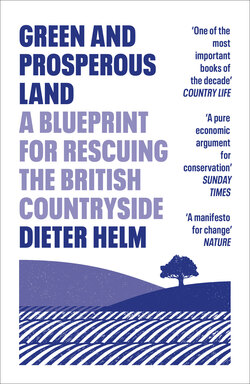Читать книгу Green and Prosperous Land - Dieter Helm - Страница 21
More infrastructure
ОглавлениеThere are probably not many people who think that Britain’s physical infrastructure is in good shape. Sitting in a traffic jam on the M25, experiencing the delays on the Great Western main line, trying to make a mobile phone call on Exmoor, let alone trying to get a decent broadband connection, are daily reminders that all is not well with Britain’s infrastructure.
Along with these basic service failures there are additional pressures. Water supplies are taken for granted, but the pressure on abstractions and the growth in demand with new housing have considerable implications for the natural environment. The attempts to reduce carbon emissions are leading to the need for new electricity transmission lines, new wind and solar farms, and new nuclear power stations.
It is not hard to argue that Britain’s infrastructures are generally not fit for purpose, even before we add the extra 10 million people and all the houses that are planned. If we do add these, and work out how much transport, energy, water and sewerage, and communications demand they will add on top, the scale of the new infrastructure development requirements that emerge is very large – with potentially massive implications for the natural environment.
Infrastructure comes in lots of shapes and sizes. There are massive projects like HS2, Crossrail, Hinkley nuclear power station, the Thames Tideway and new airport runways. Then there are significant increments to the existing systems: to roads, electricity and gas networks, and to the water and sewerage systems.
On top of all this, there are the connections to all the new houses. Travel around many smaller towns and villages, and you will see 500 houses being added here and there on the outskirts. Semi-rural Oxfordshire is littered with them – from the housing developments at Didcot linking up to the A34, to the housing estates added to villages without many amenities – in effect dormitories. One or two cars per new house on the existing roads is going to have obvious consequences, and yet the developers have only limited liabilities to address these.
Many conservationists take a hostile stance towards new infrastructure and new housing developments. Across Britain there are community initiatives to try to halt the bulldozers. Dismissed by the housing industry and their lobbyists as driven by ‘nimbys’ (‘not in my back yard’), these campaigns are typically about much more than the impacts on their individual properties. To many these look like a repeat of tagging housing on to existing communities in the 1960s, or, worse, the ribbon developments of the 1930s that helped to precipitate the planning legislation of the 1940s. They have much to fear and much to protest about if they want to protect their local communities.
The problem for these objectors is that they will mostly lose. Central government has pushed through a series of planning acts to tip the balance away from local communities, encouraged by the massive lobbying of developers. There are now national plans and national strategies, and local authorities are in effect told to get on with it.[17]
While there are good reasons for particular campaigns and objections, something more is needed if the impacts are not to be seriously damaging to the natural environment. This requires not only a return to planning, but also the urgent application of the ‘net environmental gain’ principle to infrastructure and housing developments, properly and comprehensively measured.
It also requires an intelligent approach to technologies. Electricity transmission lines no longer need to be a blot on the landscape. They can go underground. Roads and railways can be fully digital. The need to travel to work can be tempered by video links and ever more efficient communications. The comprehensive roll-out of broadband and fibre could reduce the demands for other physical infrastructure. Better measurement and management of energy supplies and water can reduce demand too. It is possible (and in the above examples it is necessary) to improve infrastructure and at the same time protect and enhance the natural environment, but only with an integrated and planned approach. The unconstrained application of market forces will not deliver this.
